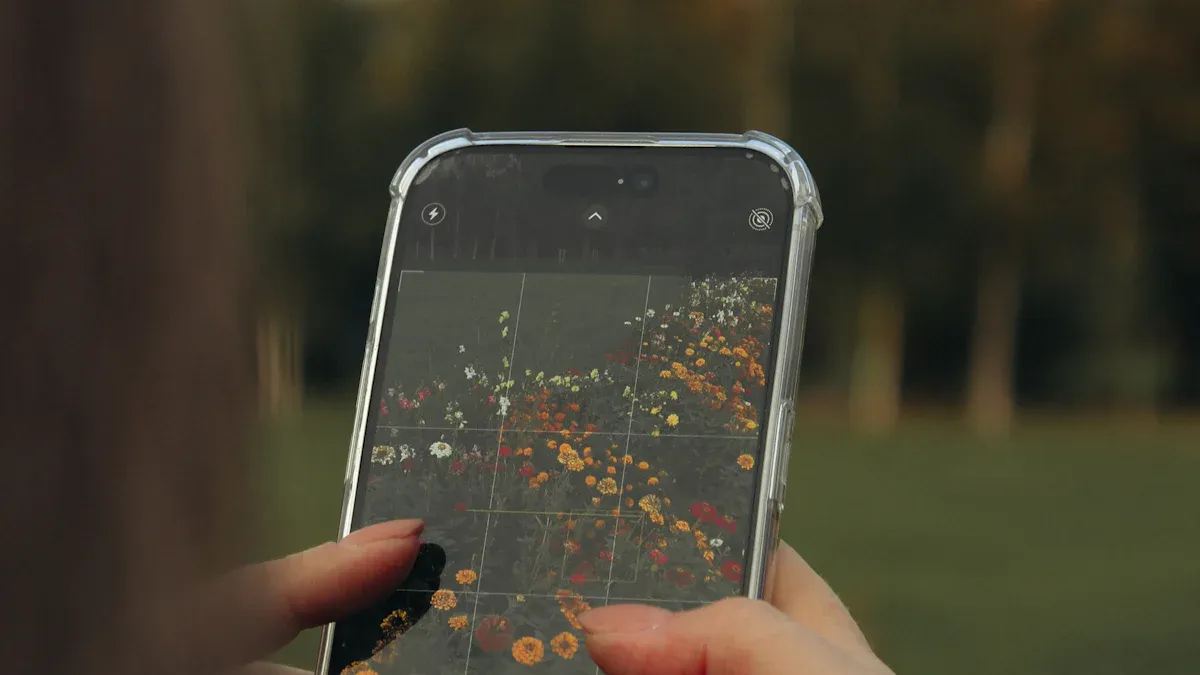Simple ways to prevent flashlight power loss while traveling

Have you ever reached for your flashlight during a power outage, only to find it dead? It’s frustrating, right? For adventure outdoor travellers, this can disrupt your plans and even put your life at risk. Understanding flashlight using habits is key. It ensures your flashlight stays reliable when you need it most.
Key Takeaways
Turn on the lockout mode to stop accidental turning on.
Take out batteries when unused to save power and keep it ready.
Keep your flashlight in a case to prevent damage and dirt.
Why flashlights lose power during travel
Parasitic drain and its impact on flashlight battery drain
Have you ever wondered why your flashlight seems to lose power even when it’s off? This could be due to parasitic drain. Many programmable flashlights draw a tiny amount of current, often in the microamp range, to maintain their settings. While this drain is usually slower than the battery’s natural self-discharge rate, it can still add up over time. For example:
Some flashlights, like the Novatac and Ra lights, have a negligible parasitic drain compared to the battery’s self-drain.
Others, like the Favourlite 3-watt headlamp, can significantly drain batteries over months, potentially killing fresh cells in six months to a year.
To avoid this, you should activate your flashlight’s lockout mode or remove the batteries when not in use.
Accidental activation during travel
Picture this: your flashlight turns on inside your bag without you knowing. By the time you need it, the battery is dead. Accidental activation is a common cause of flashlight battery drain during travel. Buttons or switches can get pressed by other items in your bag. To prevent this, always use the lockout mode or store your flashlight in a protective case.
Improper storage practices
How you store your flashlight matters. Tossing it into a bag with loose items can lead to battery drain or even damage. Batteries can shift or come into contact with metal objects, causing a short circuit. Always store your flashlight in a secure case and keep spare batteries in a separate container.
Environmental factors affecting battery performance
Extreme temperatures and humidity can wreak havoc on your flashlight batteries. High temperatures can cause them to degrade faster, while low temperatures reduce their capacity and slow chemical reactions. Humidity is another culprit. High humidity can lead to corrosion, while low humidity can dry out the electrolytes. To keep your flashlight reliable, store it in a cool, dry place whenever possible.
Simple ways to prevent flashlight battery drain

Activate the lockout mode on your flashlight
Many modern flashlights come with a lockout mode, and it’s a lifesaver. This feature disables the power button, preventing accidental activation. Imagine your flashlight turning on in your bag, slowly draining the batteries without you noticing. Lockout mode stops this from happening. To activate it, check your flashlight’s manual. Usually, it involves a simple combination of button presses. If your flashlight doesn’t have this feature, don’t worry—there are other ways to prevent battery drain.
Remove batteries when the flashlight is not in use
If you’re not planning to use your flashlight for a while, take the batteries out. This simple step eliminates the risk of parasitic drain, which can slowly deplete the charge even when the flashlight is off. Store the batteries in a separate container to keep them safe. This practice is especially useful for long-term storage or when traveling. It’s a quick and effective way to ensure your flashlight is ready when you need it.
Store your flashlight in a protective case
A protective case does more than just keep your flashlight safe from scratches. It also prevents accidental activation and protects the batteries from environmental factors like moisture and extreme temperatures. Look for a case that fits snugly around your flashlight. Some cases even have compartments for spare batteries, making them a convenient option for travelers.
Carry spare batteries in a secure container
You never know when you’ll need extra batteries, especially during long trips. Carrying spares ensures you’re prepared for unexpected situations. Use a secure container to store them. This prevents the batteries from coming into contact with metal objects, which could cause a short circuit. A small plastic case or a battery organizer works perfectly. With spare batteries on hand, you’ll never have to worry about your flashlight running out of power.
Advanced solutions for reliable flashlight using

Choose flashlights with BatteryLock technology
If you’re tired of batteries losing power when your flashlight isn’t in use, consider upgrading to a flashlight with BatteryLock technology. This innovative feature prevents battery drain by disengaging the batteries from the electric contacts with a simple twist. You’ll know it’s active when you see the visible red band, which makes it easy to check the status at a glance. With this technology, your flashlight can store power for years without needing to remove the batteries. It’s a game-changer for anyone who wants a reliable flashlight for emergencies or travel.
Use rechargeable batteries with a portable charger
Rechargeable batteries are a smart choice for frequent flashlight users. They save you money in the long run by eliminating the need for constant replacements. For example, businesses can save over $200 per flashlight in just one year by switching to rechargeable options. These batteries are also eco-friendly, reducing landfill waste and containing fewer toxic substances. Pair them with power banks and charging cables for added convenience. You can charge them via USB ports, car chargers, or even solar panels. Plus, rechargeable flashlights often feature energy-efficient LED bulbs, providing consistent brightness and durability for outdoor adventures.
Opt for solar-powered or hand-crank flashlights
When you’re off the grid, solar-powered or hand-crank flashlights are lifesavers. These options don’t rely on traditional batteries, so you’ll never have to worry about running out of power. Solar-powered flashlights charge during the day, while hand-crank models generate power with a few turns of the handle. Both are excellent choices for camping, hiking, or emergency kits. They’re lightweight, portable, and perfect for situations where carrying extra batteries isn’t practical.
Maintain your flashlight by cleaning it regularly
Keeping your flashlight clean ensures it performs at its best. Start by removing the batteries to avoid accidental activation. Use a soft, lint-free cloth to wipe the exterior, and clean the threads with a cloth and a bit of silicon-based lubricant. Don’t forget the lens—dust and dirt can reduce brightness, so use a microfiber cloth to keep it clear. Check the battery compartment for debris or corrosion and clean it as needed. Regular maintenance not only extends the life of your flashlight but also ensures it’s ready to go when you need it most.
Preventing flashlight power loss while traveling doesn’t have to be complicated. By following these simple tips, you can keep your flashlight ready whenever you need it. Whether it’s activating lockout mode or carrying spare batteries, these small steps make a big difference. Try them out, and enjoy stress-free adventures with a reliable flashlight by your side!
FAQ
How can I keep track of my flashlight's battery life during travel?
You can use a flashlight with a battery indicator. It helps you monitor power consumption and ensures you’re prepared for an extended period of time.
What’s the best way to ensure a constant power supply for my flashlight?
Carry spare batteries or use rechargeable ones with a portable charger. These options provide durability and reliability, especially during long trips or outdoor adventures.
Can environmental factors affect my flashlight’s battery power?
Yes, extreme temperatures and humidity can impact battery power. Store your flashlight in a cool, dry place to maintain its performance and extend battery life.
See Also
Maximize Your Flashlight's Battery Life With These Tips
Key Strategies for Proper Flashlight Care and Upkeep
Navigating TSA Rules for Traveling With Flashlights
